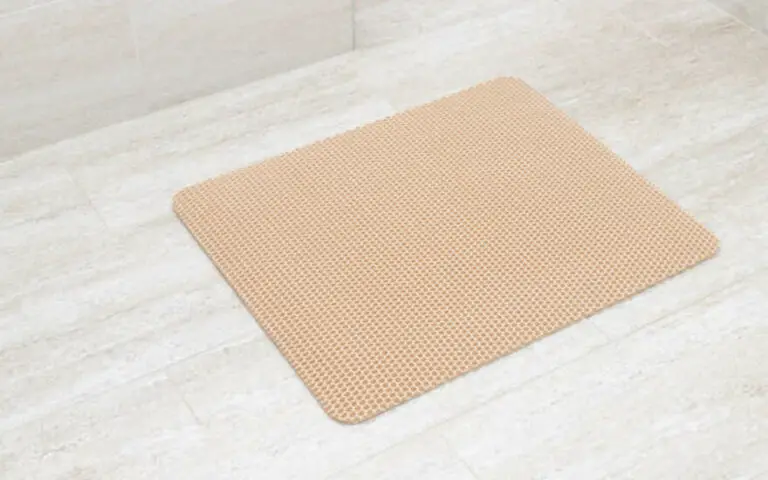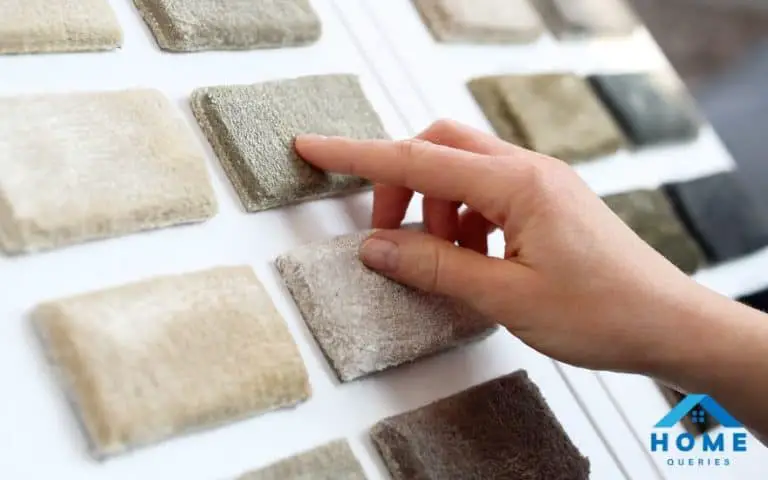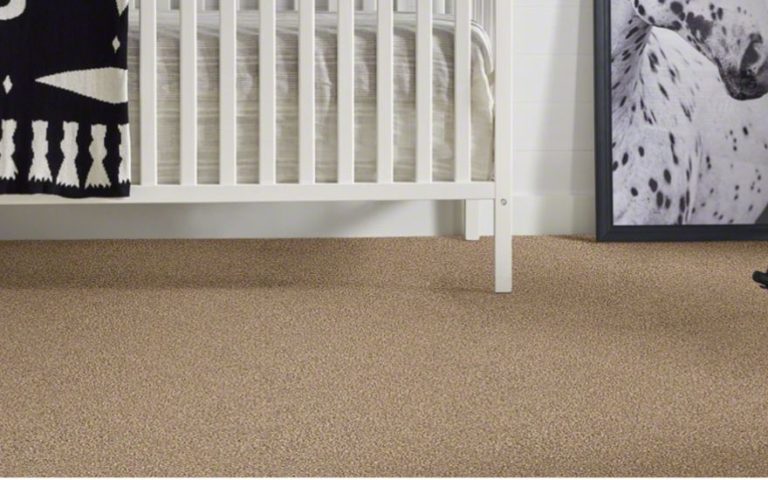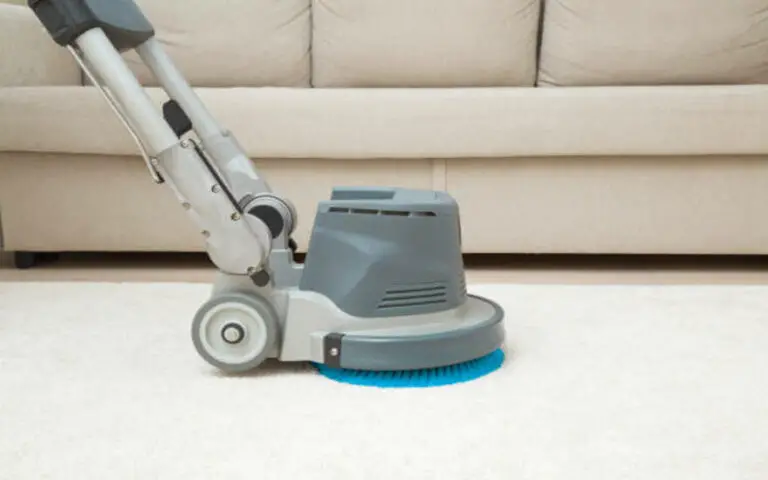Yes, It can.
Carpet can not only add a cozy feel to your room but also make the room warmer. In this blog post, I’ll look at how carpets can help keep you warm and comfortable during the colder months.
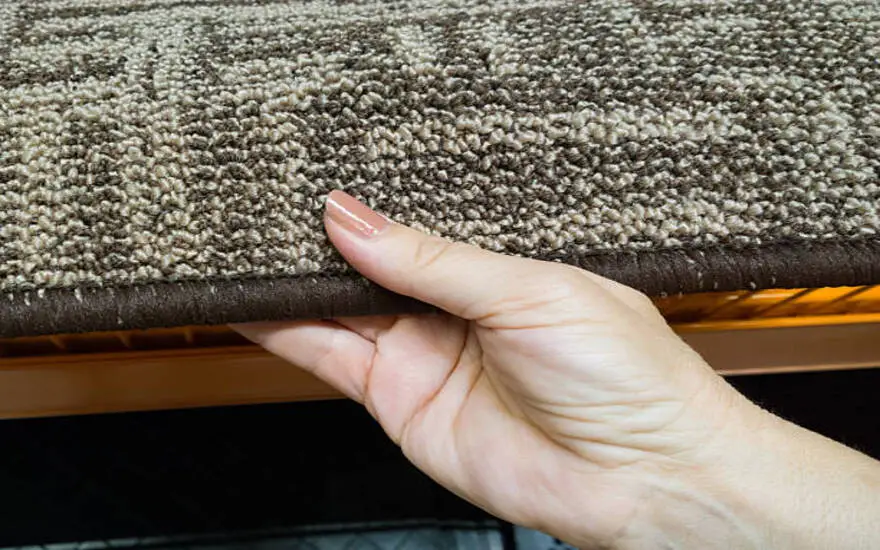
Does carpet make the room warmer?
Yes, the carpet does make a room warmer! The thermal properties of carpet help insulate the floor and walls, trapping heat and reducing the energy necessary to keep a room at a comfortable temperature.
Research has shown that carpet provides around ten times more insulation than hard floor coverings. This means that even if the house isn’t built on a concrete foundation, the carpet can still make the room feel warmer and use less energy for heating.
That’s why choosing the right type of carpet for your home is important, based on your lifestyle, fiber type, pile height, color, and style. In addition to helping keep your room warm in winter, carpet can also help keep it cooler during summer.
1. The Role of Carpet in Regulating Room Temperature
When regulating room temperature, carpet can play a key role. Its insulation properties help keep the heat in, especially when carpeting is laid on a concrete foundation. Carpeting adds an extra layer of insulation that helps keep the warm and cold air in.
Additionally, it can absorb some of the heat produced by appliances and other sources of warmth in the home, which helps to keep the room comfortable and cozy. Carpet is an effective way to maintain a suitable temperature in any room and a great choice for energy efficiency.
2. The Thermal Properties of Carpet
As mentioned earlier, carpet is a great way to regulate room temperature. Its thermal properties are what make it so effective.
The higher the R-value of a carpet, the better it resists heat transfer. This means carpets can trap warm air in the room and keep it from escaping.
On the other hand, hard surfaces like tile or metal can remove heat from your feet much more quickly. Rugs store heat about 10-12% better than hard floors, so they can help reduce the amount of cold air entering through the floor.
Well-fitted and well-made carpets can make a real difference when retaining heat in a room and keeping energy bills low.
How does Carpet Affect Heat Retention in the Room?
Carpet has proven to be an effective insulating material for a room’s temperature – it can help maintain the heat in a given area.
Carpet helps reduce heat loss by providing some minimal insulation value. Research by Wools of New Zealand found that carpet provides around ten times more insulation than hard floor coverings.
This means that carpet is an excellent way to keep the temperature comfortable in any space. Not only does carpet reduce heat loss, it also helps retain warmth for longer by trapping air in its fibers, thus allowing for better insulation.
In addition to its thermal properties, selecting the right type of carpet for your home also plays an important role in regulating room temperature.
The best carpets for insulation are those with a higher R-value (resistance value), so it is important to consider your lifestyle and choose the right fiber type and pile height when shopping for your next carpet.
How to Select the Right Carpet?
When selecting the right carpet for your room, there are a few factors to consider. Firstly, consider your lifestyle – how much foot traffic will the area receive? This will help inform what type of fiber and pile height you should choose.
You’ll also want to consider the colors and styles available to choose a carpet that fits your aesthetic. Once you’ve narrowed your selection, compare different types of carpets and their insulation properties.
Look for carpets with thicker loops or textured fibers for added insulation and heat retention. Finally, select the best carpet for your home’s insulation needs – and enjoy its warmth and comfort!
1. Consider your lifestyle
When selecting the right carpet for your room, lifestyle should be a top priority. Think about how much foot traffic there is in the area and if you have kids or pets.
If there will be a lot of activity in the room, then you’ll want to choose a more durable and stain-resistant carpet.
Carpets with longer fibers are usually better at hiding dirt and stains, while carpets with shorter fibers are more durable and easier to clean.
Whether you’re looking for a carpet that will add a touch of elegance to your space or one that can handle all of your family’s activities, make sure you consider your lifestyle when making your selection.
2. Choose the right fiber type.
When choosing the right carpet for your home, the type of fiber is an important consideration. Different fibers have different properties, so picking one that suits your lifestyle and the room’s needs is important.
Nylon artificial fibers are great for heavy-traffic areas, while wool is popular for guest bedrooms and living rooms due to its natural look and feel. Polyester is also a popular choice for its softness and affordability.
Whichever you choose, check the face weight before deciding – this will tell you how thick the carpet is and how much wear it can handle.
Additionally, check with your manufacturer for padding recommendations – this will help ensure your new carpet lasts as long as possible.
3. Think about the pile height.
When selecting the right carpet for your home, pile height is an important factor to consider. Pile height refers to the thickness of the fibers in your carpet, which can range from low to very high piles.
Low-pile carpets are ideal for areas with heavy traffic as they are easier to clean and maintain. On the other hand, high-pile carpets offer a softer, more luxurious feel underfoot and can add warmth to a room.
Shorter pile carpets are more durable and require less maintenance, while longer ones provide more cushioning and sound absorption.
It’s important to consider your lifestyle and needs when selecting a carpet because the right pile height will make a big difference in the look and feel of your home.
4. Compare different colors and styles.
Once you have considered your lifestyle and chosen the right fiber type, you can compare different carpets’ colors and styles.
Lighter colors like beige, cream, or ivory will make your room appear larger, while darker colors like blues, purples, maroons, or blacks can provide extra comfort. Lighter carpets tend to absorb more heat, while darker carpets are better at retaining heat.
If you have cool walls, it’s best to stick with cooler-colored carpets, and if you have warm walls, then a neutral-colored carpet may work better for you.
Area rugs are also popular as they come in various colors and designs that can be switched among rooms. Whatever carpet style you choose, make sure it reflects your lifestyle and will help keep your room at a comfortable temperature.
What’s the Best Carpet for Insulation?
When selecting the best carpet for insulation, several factors must be considered. The most important factor is the type of fiber used in the carpet.
Natural fibers like wool are generally more effective insulators than synthetic fibers like polyester and nylon.
Additionally, carpets with a thicker pile height will help to retain more heat in the room. Lastly, lighter-colored carpets may be more energy efficient than darker shades as they tend to reflect more heat. With all these factors in mind, it’s easy to see why carpet is an excellent choice for keeping a room warm and cozy during winter.
Summary
In summary, carpet can make a room feel warmer in the winter and cooler in the summer. This is because carpets are great insulators that help to keep heat in and out of the house. Carpet also has a low conduction rate, which helps it to resist heat transfer.
When selecting carpet for your home, you should consider your lifestyle, choose the right fiber type, consider the pile height, compare different colors and styles, and consider what insulation you need. Ultimately, thick carpets made of wool or polyester offer the best insulation for your home.
How does carpet insulation work?
Carpeting can play a vital role in insulating your home and keeping the temperature comfortable all year round. Carpeting works by trapping air between the carpet’s fibers, creating an insulation barrier that prevents heat from transferring through the floor.
This air barrier also helps to keep cool air during summer months, reducing the need for energy-intensive air conditioning systems.
Additionally, carpets are often made of materials with low conduction rates, meaning they don’t allow heat to readily pass through them. This makes them one of the most effective forms of insulation available, helping to keep your home warm and cozy during winter and cooler in summer.
Is carpet more energy efficient than other flooring types?
Yes, carpet is more energy efficient than other flooring types. Research from Wools of New Zealand found that carpet provides around ten times more insulation than hard floor coverings.
This means that carpet helps to reduce energy costs in heating, as it offers additional insulation for the floor in cases where the space below the floor is much different in temperature. Carpet also offers better acoustics to reduce sound.
The warm comfort that carpet provides is not just your imagination. Unlike other types of flooring, it retains heat in a room more effectively, making it a great choice to save energy while enjoying a comfortable environment.
What are the best types of carpets for insulation?
Regarding insulation, wool is one of the best carpet materials for your home. Not only does it retain heat better than other materials, but it also has a natural resistance to moisture and mold growth.
Wool carpets also provide a great deal of comfort and softness. Other good carpet materials for insulation are nylon and polyester, both made from synthetic fibers and provide great durability.
These synthetic fibers also help with air circulation in your home, making them ideal for areas that may experience extreme temperatures.
Additionally, if you want a more luxurious look, you can opt for higher-pile carpets like shag rugs or plush carpets that provide an extra layer of insulation. No matter what carpet you choose, shop around to find the best options matching your budget and lifestyle.

